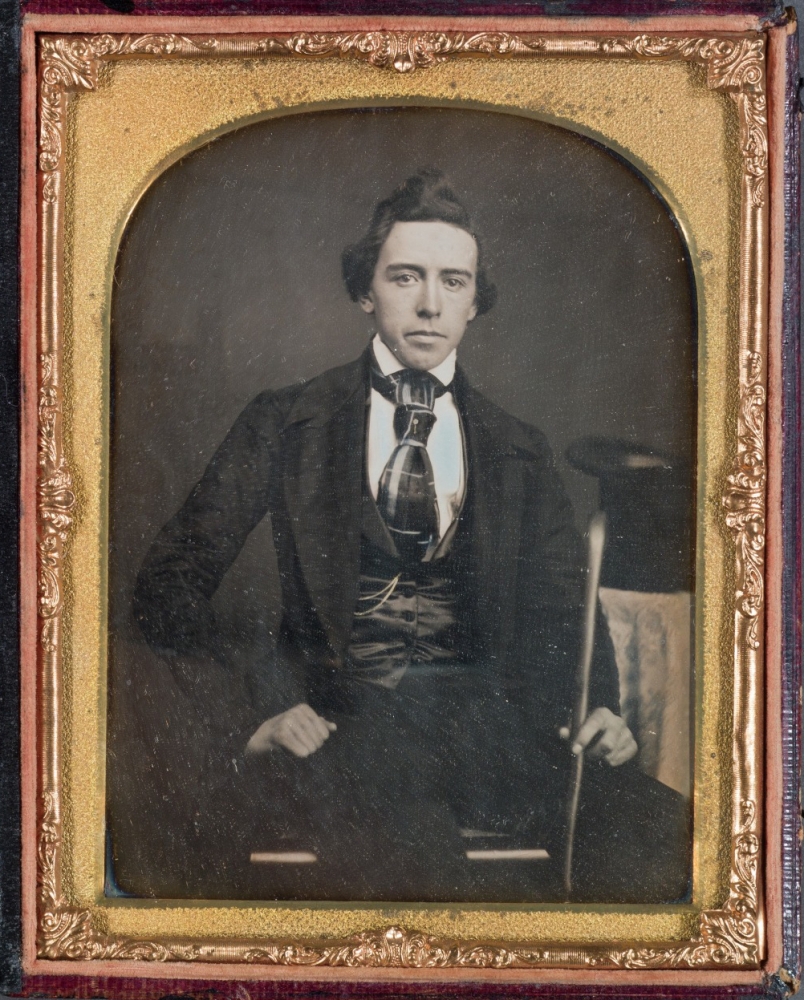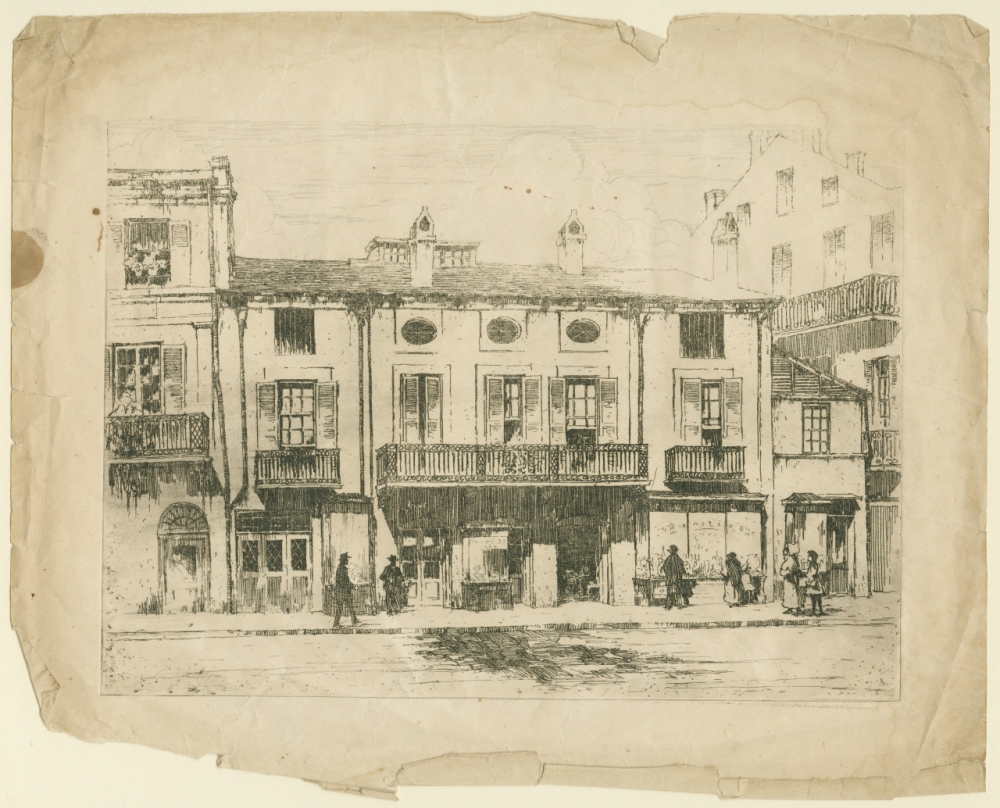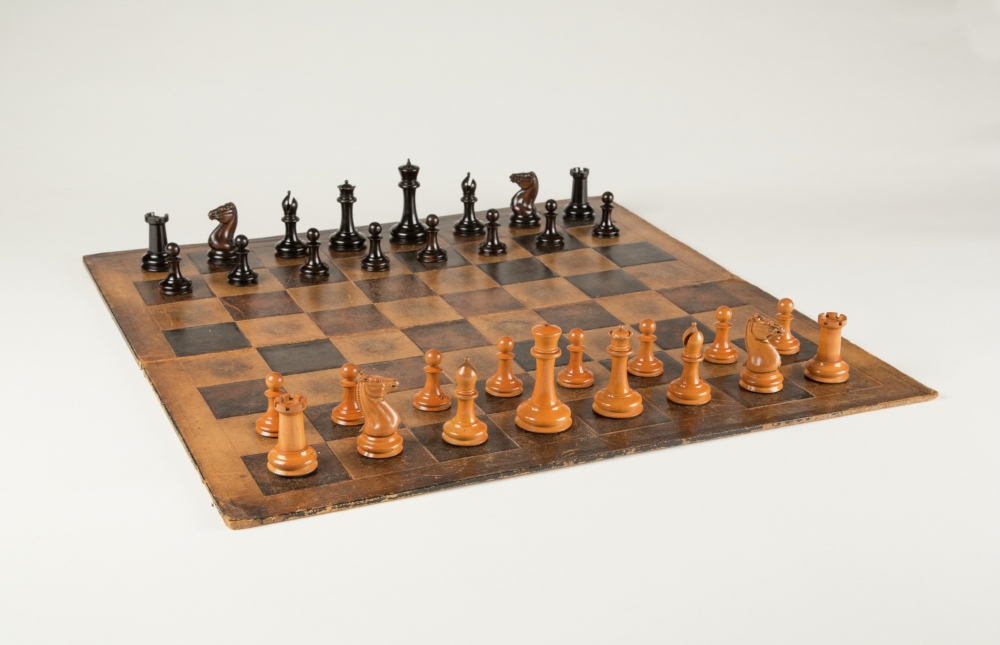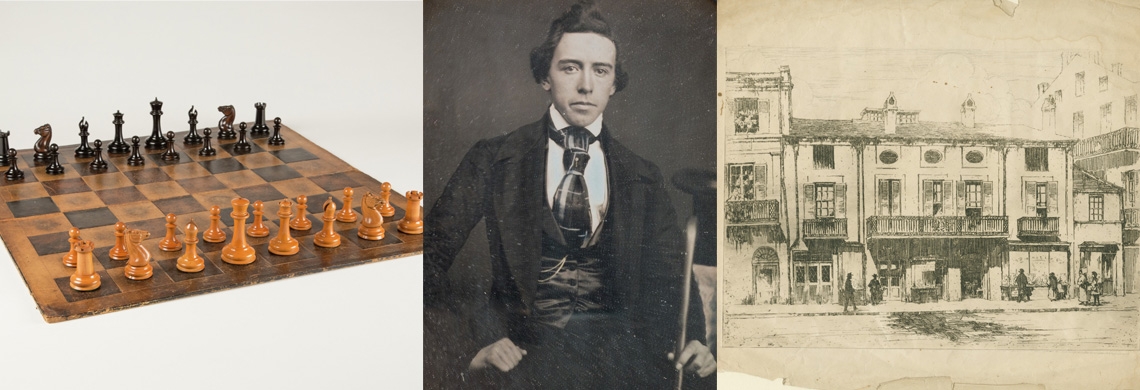In the winter of 1857, a frenzy took over the city of New Orleans. Twenty-year-old Paul Morphy had returned to his home city from a trip to New York, where he dominated the best chess players in the country. This led to a craze that would continue until the summer of 1858. Merchants could not keep enough chess books, chessboards, and pieces to meet the demand. Newsboys on street corners chattered about strategy. Policemen, while on patrol, were studying chess problems in an attempt to become better at the game. The entire city had chess mania.

A daguerreotype of Paul Morphy framed in an embossed case, from between 1857 and 1859. (THNOC, acquisition made possible by the Boyd Cruise Fund, 1996.75)
Morphy was born in New Orleans in 1837 and raised in the French Quarter. He was a descendant of refugees escaping the Haitian Revolution. Among other things, these émigrés and their descendants were very influential in local printing, law, and music. Morphy’s mother, Louise Thérèse Félicité Thelcide le Carpentier, was widely known for her contributions to the local opera community. She would often host gatherings at the family home on Royal Street, now the location of Brennan’s Restaurant, where music and chess were among the main activities. While at first an observer, Morphy would eventually participate in the matches. His reputation as a worthy opponent grew, and at the age of 10 he began a three-year win streak that culminated with Morphy decisively beating the Hungarian master Janos J. Löwenthal when he visited New Orleans.

An etching from the early 20th century depicts the childhood home of Paul Morphy at 417 Royal Street. The property is now better known as Brennan's Restaurant. (THNOC, 1978.215.7)
After the match against Löwenthal, Morphy curtailed his chess-playing as he focused on obtaining his undergraduate and law degrees. However, upon graduating law school in 1857, as chance would have it, there was a group of organizers putting together the first National Chess Congress to identify the best chess player in the United States. Morphy would enter the tournament and sweep away his opponents to take home the title. He would become an instant celebrity, and grew his fame with dazzling victories in Europe. However, just as chess was ascending in popularity around the country, the US descended into Civil War. Afterward, although New Orleans boasted of producing the world's greatest chess player, the game failed to advance to the magnitude that it had in other places around the world and many parts of the US. Morphy himself ceased playing chess competitively around 1870, and he died suddenly at age 47 in 1884.

A chess board and pieces once belonging to Paul Morphy are on display in THNOC’s French Quarter Galleries on 520 Royal Street. (THNOC, 1983.51.1)
A community of chess players has always remained in New Orleans, if in small numbers. All one has to do is pass by Russell’s tire shop in Mid-City, or find master Jude Acers on Decatur Street to witness a game. Clubs can be found in a number of schools throughout the city, and the New Orleans Recreation Development Commission (NORD) has recently established chess clubs in six recreation facilities. The Morphy Chess and Cultural Center opened on Earhart Boulevard in April, and serves as a hub for youth and adults to learn and play the game. Although the local chess mania brought on by Morphy in the mid-nineteenth century faded, the game seems to be on the rise again.
See Morphy's chess board and other related artifacts in THNOC's French Quarter Galleries on 520 Royal Street. Admission is free.












